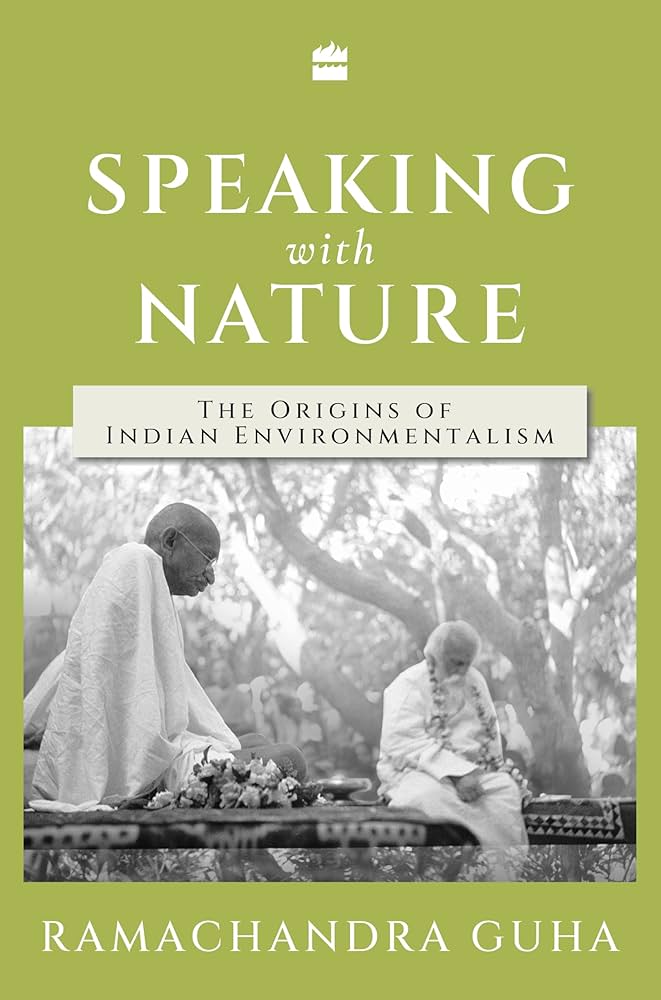
Ramachandra Guha needs no introduction really as far as his works over the years are concerned . Each time he comes out with a book it raises the bar irrespective of the topic he opts to write on . And his masterpieces had impressed all – Gandhi Before India (2013) and Gandhi: The Years That Changed the World (2018), are the two volumes of biography of Mahatma Gandhi, an icon of the Indian independence movement. The other being India After Gandhi (2007), an account of the history of India from 1947-2017.
India after Gandhi in 2007 . Then Guha went on to write the introduction for and edited Makers of Modern India, which profiles 19 Indians who helped in forming and shaping India. The book contains excerpts of their speeches and essays, and covers topics such as religion, caste, colonialism, and nationalism. That’s Guha for you . Versatile and erudite.
Now the ace historian is once again out to mesmerise his ardent audience with his latest book – Speaking With Nature – The Origins of Indian Environmentalism. And in the words of Guha on what prompted him to delve into environmental research he says : My original entry into environmental research was shaped by the debates generated by the Chipko movement. In the decades, I was away, professionally speaking, from the field , such local and national concerns had been largely, if not comprehensively, displaced by global debate on human – induced climate change. When I first began to work on this book, I saw its as an elaboration of a forgotten first wave of the Indian environmentalism , to be read and discussed( I hoped) by those active in the second wave that Chipko had sparked.
By the cannons of orthodox and social science, countries like India are not supposed to have an environmental consciousness. They are . as it were, ‘ too poor to be green’ . In this critically researched book , Ramachandra Guha takes the lead and challenges this narrative by revealing a virtually unknown prehistory of the global movement set far outside Europe or America.
The book is engaging from the word go as many as many as ten distinguished thinkers writing their thoughts in Nine unputdownable chapters the likes are – Rabindranath Tagore, Radhakamal Mukerjee, JC Kumarappa , Patrick Geddes , Albert And Gabrielle Howard , Mira, Verrier Elwin , K M Munshi and M Krishnan wrote about the forest and the wild, soil and water, urbanization and industrialization .
Long before the publication of Rachel Carson’s Silent Spring and well before climate change gained currency as a term , These ten remarkable individuals wrote with deep insight about the dangers of environmental abuse from within an Indian context.
Positing the idea of what Guha calls ‘livelihood environmentalism’ in contrast to the ‘full- stomach environmentalism’ of the affluent world , these writers, activists and scientists played a pioneering role in shaping global conversations about humanity’s relationship with nature.
The Chapter One – The Myriad- Minded Environmentalist by Rabindranath Tagore has fascinating anecdotes which surprises the readers. Twenty years after the publication of Gitanjali, Tagore composed a volume of poems called Banabani ( The voice of the Forest) which approached trees and the forest in mystical and religious spirit .
In another essay, published five years later, Tagore called the forests ‘ the one great inheritance’ of India and Indians. He offered n intriguing contrast between how forests shaped Indian history and how the sea had shaped the history of northern Europe. This essay in 1919 was called ” The Message of the Forest” , the title mirroring that of Tagore’s early volumes of poem. Three years later, he published a sequel, which he titled ” The Religion of Forest’. Here he spoke of how in ancient India ‘ the forest entered into a close living relationship ‘ with the work and leisure of humans.
As the world today grapples with environmental challenges with climate change and air pollution all over the world , environmental issues becomes critical for human beings flora , fauna and animals to survive. Breathe clean air suddenly is in the lips of all . What had led to to this situation should be known to all. And wake up all as to how careless we are are when it comes to environmental issues. Until it really hits us hard we tend to ignore disdainfully .
Spanning more than a century of Indian history and decidedly transnational in reference, Speaking with Nature offers rich resources for considering the threat of climate change today . A Truly riveting read indeed .
[the_ad id=”55722″]


















